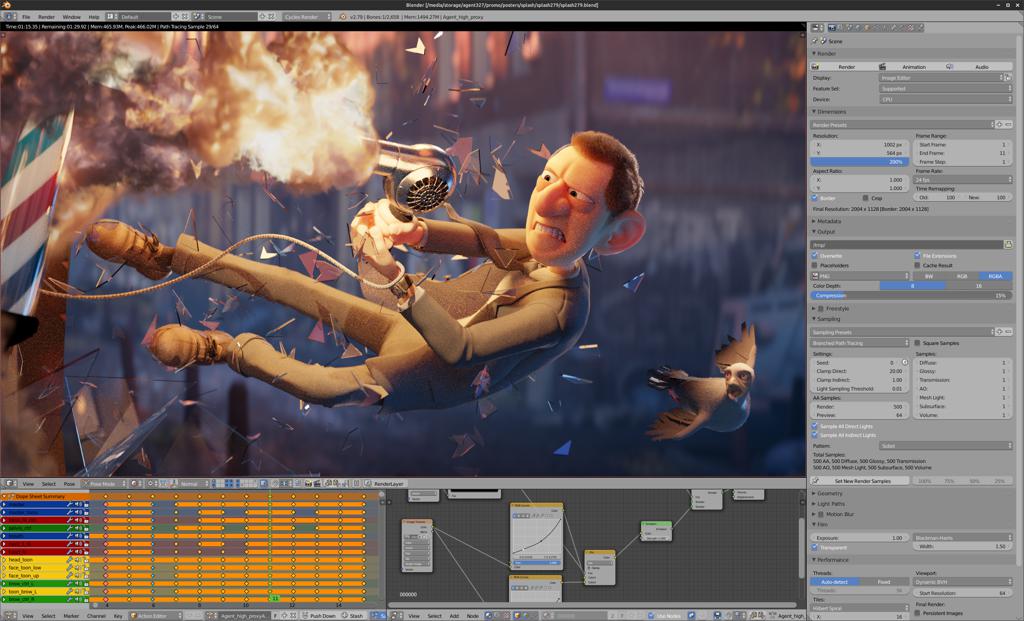


Today, Blender is free and open-source software, largely developed by its community as well as 26 full-time employees and 12 freelancers employed by the Blender Institute. On September 7, 2002, it was announced that they had collected enough funds and would release the Blender source code. The campaign aimed at open-sourcing Blender for a one-time payment of €100,000 (US$100,670 at the time), with the money being collected from the community.

On July 18, 2002, Roosendaal started the "Free Blender" campaign, a crowdfunding precursor. In May 2002, Roosendaal started the non-profit Blender Foundation, with the first goal to find a way to continue developing and promoting Blender as a community-based open-source project. This also resulted in the discontinuation of Blender's development. After NeoGeo's dissolution, Ton Roosendaal founded Not a Number Technologies (NaN) in June 1998 to further develop Blender, initially distributing it as shareware until NaN went bankrupt in 2002.

NeoGeo was later dissolved, and its client contracts were taken over by another company. On January 1, 1998, Blender was released publicly online as SGI freeware. Some design choices and experiences for Blender were carried over from an earlier software application, called Traces, that Roosendaal developed for NeoGeo on the Commodore Amiga platform during the 1987–1991 period. The name Blender was inspired by a song by the Swiss electronic band Yello, from the album Baby, which NeoGeo used in its showreel. Version 1.00 was released in January 1995, with the primary author being company co-owner and software developer Ton Roosendaal. History A Blender Cube (version 2.93)īlender was initially developed as an in-house application by the Dutch animation studio NeoGeo, and was officially launched on January 2, 1994. Blender's features include 3D modelling, UV mapping, texturing, digital drawing, raster graphics editing, rigging and skinning, fluid and smoke simulation, particle simulation, soft body simulation, sculpting, animation, match moving, rendering, motion graphics, video editing, and compositing. Abkhaz, Arabic, Basque, Brazilian Portuguese, Castilian Spanish, Catalan, Croatian, Czech, Dutch, English (official), Esperanto, French, German, Hausa, Hebrew, Hindi, Hungarian, Indonesian, Italian, Japanese, Korean, Kyrgyz, Persian, Polish, Portuguese, Romanian, Russian, Serbian, Simplified Chinese, Slovak, Spanish, Swedish, Thai, Traditional Chinese, Turkish, Ukrainian, Vietnameseīlender (stylised as blender) is a free and open-source 3D computer graphics software tool set used for creating animated films, visual effects, art, 3D-printed models, motion graphics, interactive 3D applications, virtual reality, and, formerly, video games.


 0 kommentar(er)
0 kommentar(er)
